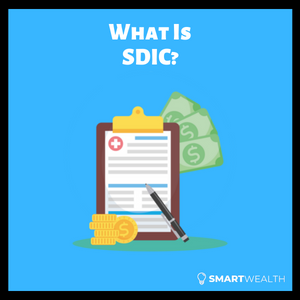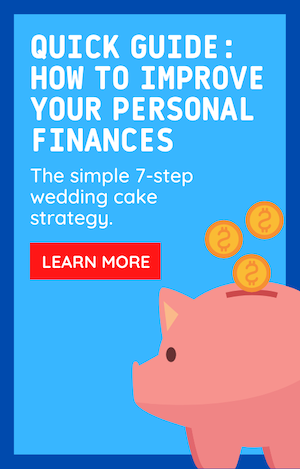You may have seen this phrase: “protected up to specified limits by SDIC” in product brochures and advertisements by financial institutions.
What exactly are you insured for and how much is the limit?
In this article, we cover all that and took a deeper look into SDIC in Singapore and the schemes it administers.
So, read on!
What Is SDIC (Singapore Deposit Insurance Corporation)?
SDIC stands for Singapore Deposit Insurance Corporation. The company is regulated by the government as its board of directors is directly accountable to the Monetary Authority of Singapore (MAS). This is so because the SDIC is meant to inspire confidence, which, when talking about money, is no easy feat.
The SDIC insures the public’s deposits and insurance policies under two schemes:
First is the Deposit Insurance Scheme (DI). All full banks and finance companies are required to be members and participate in this scheme. If you’re wondering whether or not your bank is a member, it is or it should be. If you want to make sure, you can check out this list of all SDIC DI Scheme Members.
The next is the Policy Owners’ Protection Scheme (PPF). Like the DI Scheme, all insurers who are legally allowed to offer life or general insurance are required to participate in this scheme. However, the MAS can exempt an insurer from having to be a member. Here is a list of the members of the PPF Scheme.
You do not have to do anything to get this, it is the bank’s or the insurer’s job. How it works is: the DI or PPF Scheme members pay premiums to have deposits or policies under each of them insured by the respective schemes.
SIDE NOTE When was the last time you conducted thorough financial planning or reviewed your finances? In this day and age in Singapore, doing so will absolutely improve the quality of life for you and your loved ones. Here are 5 reasons why financial planning is so important.
Why Is There a Need for These “Insurance” Schemes?
Currently, Singapore’s economy and financial market is one of the strongest in the world. So why do we need these schemes?
Nothing is impervious to disaster. The best we can do is to prepare as much as we can. Also, public perception of security is essential to a banking system. This is what encourages people to save and invest, instead of hoarding their money under mattresses.
Having these two schemes run by the SDIC bolsters that perception. With these in place, people can rest assured that their money is kept safe.
To put things in context, remember that banks do not only keep your money for you, they also stimulate the economy by providing loans for people who are going into business. If nobody keeps their money in banks, banks won’t have any to move around and lend as investments.
Considering this, we can see how public perception is crucial to a bank’s success. If people think one bank will fail, they are going to take out their money from that bank for the fear of losing it – I would too. This is what is called a “bank run.” When this happens, the bank ends up failing even if it was doing just fine before. With the DI Scheme, people would not be so quick to panic because they know that their deposits will still be recoverable, if not from the bank, from the SDIC. Of course, it goes without saying that the schemes will also cover cases of an actual failure of the banks or FIs.
Deposit Insurance (DI) Scheme
As mentioned above, all full banks are required to be members of the DI Scheme. If you check your bank’s website or your bank statement, you will find something there that will tell you that your deposit is covered by the deposit insurance scheme.
What is covered?
So what is covered? The short version is that it covers up to $75,000 per bank per person. That is the limit, which can change from time to time, even if these are in different accounts or account types.
So, if John has:
- Account A with $30,000,
- Account B with $30,000 and
- Account C with $30,000
all in Bank D, if Bank D fails, he may only recover a maximum of $75,000, the limit.
However, this limit is per person and per bank which means two things:
- The deposits under a specific legal entity, such as in a partnership, will not be combined with a person’s other accounts. The limit is per legal entity, and in the eyes of the law, a corporation could be separate from its owners. So, if the same John has:
- Account A with $30,000 and
- Account B with $30,000 in Bank D and
- John’s Partnership owns Account C with $30,000 all in Bank D,
If Bank D fails, John may be able to claim the entire $90,000 because only Accounts A and B will be added up which falls below John’s $75,000 limit. Then, John’s Partnership has its own $75,000 limit which is well above its $30,000 in Bank D.
(Note: Accounts in a sole proprietorship and the owner’s personal accounts may still be aggregated.)
- A person’s deposits can be insured up to $75,000 per bank, so the accounts in one bank will not be added to those in other banks. So if John has:
- Account A with $30,000 and
- Account B with $30,000 in Bank E, and
- Account C with $30,000 in Bank D,
John may be able to claim the entire $90,000 because only Accounts A and B will be added up which falls below the limit for Bank E. Then, John’s deposit in Bank D has its own $75,000 limit which is well above the $30,000 in Bank D.
DID YOU KNOW? According to a survey conducted by MoneySense, about 3 out of 10 Singapore residents aged 30 to 59 had not started planning for their future financial needs. This isn't surprising because personal finance can seem complicated and daunting. But really, there are only a few things that you should focus on. Learn how to significantly improve your personal finances with the 7-step "wedding cake" strategy today.
What is not covered?
What is not covered? Anything above the $75,000 limit per bank per person will not be covered. Also, it only covers Singapore-dollar denominated accounts (savings, fixed deposits and current accounts.) It does not cover foreign currency accounts and those accounts that are more of investments than savings like structured deposits and other investment products.
If you are not sure if your accounts are covered, you can check with your bank’s register of insured deposits, which they are required to keep under the DI Scheme.
Policy Owners Protection (PPF) Scheme
The rationale behind the PPF Scheme is very similar to that behind the DI Scheme: They stand behind these FIs and inspire confidence, making them stronger in doing so.
What is covered?
The PPF Scheme covers general and life insurance policies issued by insurers that are legally authorised to do so in Singapore. Life insurance includes all types of life insurance, endowment plans, retirement plans. The value of these policies, and all other accrued values on them including advance premium payments are covered under the PPF Scheme.
For individual life and voluntary group life insurance, the limit of the coverage is $500,000 for the guaranteed sum assured and $100,000 for guaranteed surrender value. Like in the DI Scheme, these amounts are aggregated per insured (you) per insurer. For individual and voluntary group annuities, the cap is at $100,000 of guaranteed benefits.
For covered general insurance, it includes all types of insurance that are required under the Motor Vehicles (Third Party Risks and Compensation) and Work Injury Compensation Acts, for the full amount. It also includes motor, travel, and personal property insurance policies. There are typically no limits in terms of PPF coverage for general insurance policies except:
- When the coverage is expressly limited by some law
- A cap of $50,000 for a personal motor insurance policy where the claim is for damages to one’s own property.
- A ceiling of $300,000 for property damage claimed under personal property insurance.
As in the DI Scheme, the PPF members are required to have a roster of their products that are covered by the PPF Scheme. You can check out your policy or the insurer’s website to see if your policy is covered.
What is not covered?
Foreign insurers which are exempted by MAS are not required to be members of the PPF scheme.
Also, note that unlike under the DI Scheme, you do not automatically get to claim these amounts in the event your insurer fails or closes down. The PPF fund must be activated for your insurer (which usually happens when they have been compelled to wind up, voluntarily wind-up, or have become insolvent). But in real-world scenarios, another company usually takes over before getting to that stage.
Should the SDIC Schemes Matter to You?
In reality, the chances of you ever having to claim anything under these two schemes are slim. All banks and FIs are watched by the MAS, not only for foul play but also for overall viability. Transactions that these institutions conduct that may affect their viability, like investing funds or even issuing bonuses to shareholders, are subject to strict scrutiny.
These schemes are just there to make an already sound institution even more stable. They also give the depositors or the policy holders recourse in the unlikely event that banks or FIs fail.
Lastly, having these funds from the DI scheme and PPF scheme will defray the costs in case one bank or FI fails. Instead of the government shouldering the cost or the public losing all their money from the failure of one bank, the cost is carried by all the member banks or FIs through its regular payment of a comparably small sum each, the same way regular insurance defray the cost of damage.


